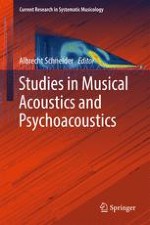
2017 | OriginalPaper | Buchkapitel
Japanese Flutes and Their Musical Acoustic Peculiarities
verfasst von : Shigeru Yoshikawa
Erschienen in: Studies in Musical Acoustics and Psychoacoustics
Aktivieren Sie unsere intelligente Suche, um passende Fachinhalte oder Patente zu finden.
Wählen Sie Textabschnitte aus um mit Künstlicher Intelligenz passenden Patente zu finden. powered by
Markieren Sie Textabschnitte, um KI-gestützt weitere passende Inhalte zu finden. powered by